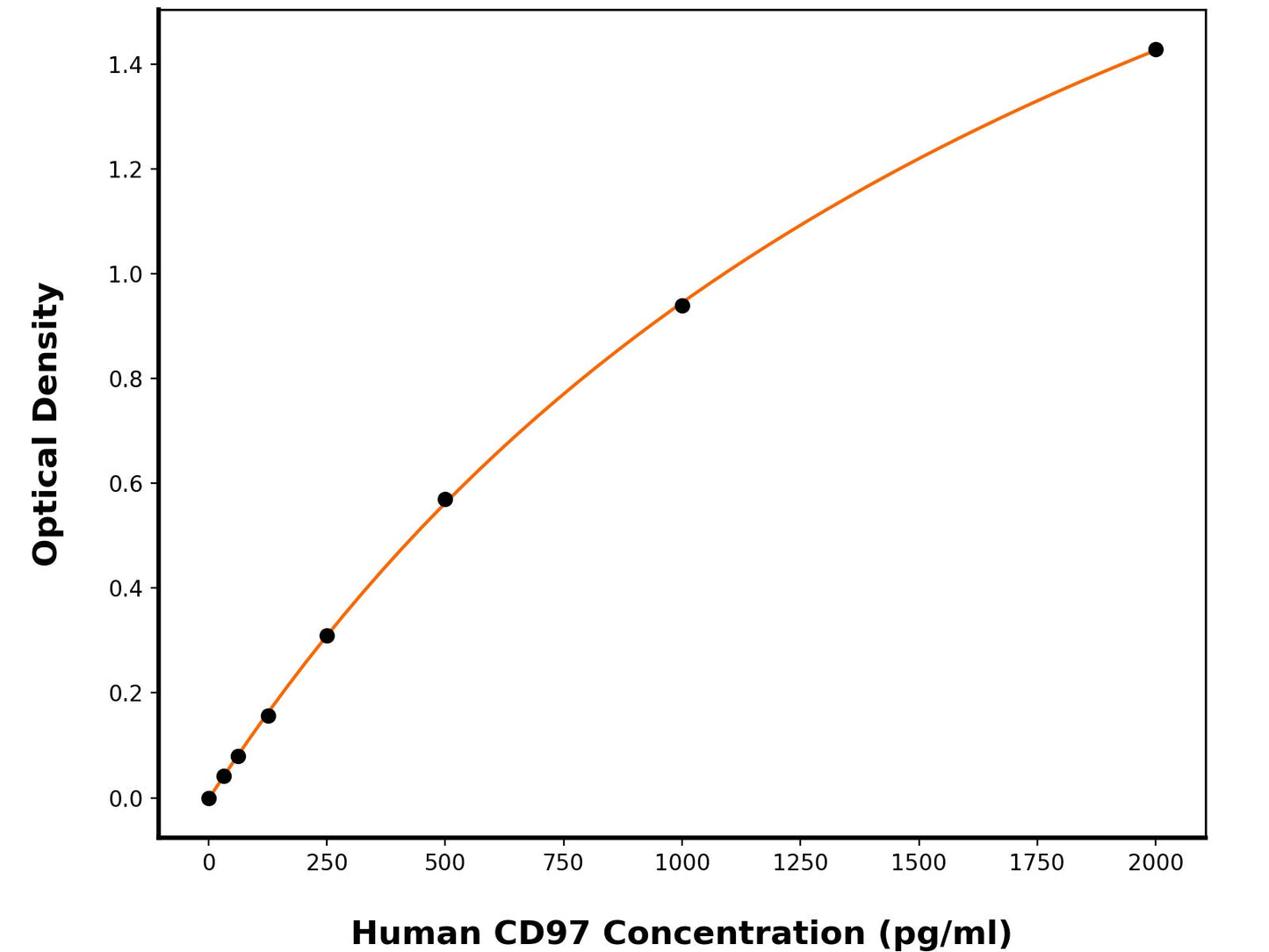1
/
of
1
Human Adhesion G Protein-Coupled Receptor E5 (ADGRE5) ELISA Kit
Human Adhesion G Protein-Coupled Receptor E5 (ADGRE5) ELISA Kit
This ELISA kit is designed to detect Human Adhesion G Protein-Coupled Receptor E5 (Human ADGRE5). The assay plate has been pre-coated with mouse anti-Human CD97 monoclonal antibody. When the sample containing CD97 is added to the plate, it binds to the antibodies coated on the wells. Then, a horseradish peroxidase conjugated mouse anti-Human CD97 Antibody is added to the wells and binds to CD97 in the sample. After washing the wells, substrate solutions are added, and the color intensity is directly proportional to the amount of Human CD97 present. The reaction is stopped by adding an acidic stop solution, and the absorbance is measured at 450 nm.
Catalog No:
BPE195
Regular price
$624.00 USD
Regular price
$480.00 USD
Sale price
$624.00 USD
Unit price
/
per
2 weeks
Couldn't load pickup availability
Product Details
Species Reactivity
Human
Sensitivity
11.36 pg/mL
Detection Range
31.25-2000 pg/mL
Sample Type
Serum, plasma, cell culture supernates
Incubation(s)
3.5 hour(s)
Research Areas
Immunology, Signal Transduction, Neuroscience, Stem cells
Background
The cluster of differentiation (CD) system is commonly used as cell markers in immunophenotyping. Different kinds of cells in the immune system can be identified through the surface CD molecules which associating with the immune function of the cell. There are more than 32 CD unique clusters and subclusters have been identified. Some of the CD molecules serve as receptors or ligands important to the cell through initiating a signal cascade which then alter the behavior of the cell. Some CD proteins do not take part in cell signal process but have other functions such as cell adhesion. The CD97 is a receptor predominantly expressed in leukocytes and belongs to a new group of seven-span transmembrane molecules, which is also designed EGF-TM7 family. The family members are characterized by an extended extracellular region with several N-terminal epidermal growth factor-like domains two of which contain a calcium-binding site. Mature CD 97 has two noncovalently associated subunits and is composed of a large extracellular protein (CD97 alpha) and a seven-membrane spanning protein (CD97 beta). CD97 is considered as a defining feature of G protein-coupled receptors. The effects that lymphocytes and erythrocytes adhere to CD97-transfected COS cells suggest that CD97 has the ability to bind cellular ligands. CD97 alpha has three alternatively spliced isoforms that are related to the calcium-binding EGF-like repeats in the microfibril protein fibrillin. Leukocytes strongly positive for CD97 are concentrated at sites of inflammation relative to CD97 expression in normal lymphoid tissues.
Shipping Condition
Shipped on cold gel packs.
Storage Condition and Shelf Life
This product can be stored at 2-8C.
Analyte
Adhesion G protein-coupled receptor E5
Regulatory Status
For Research Use Only

